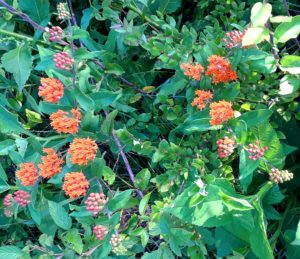Identifying Plants In Our Yard
Identifying plants — especially native ones — can be a somewhat difficult process, especially if you’ve moved (as I have) to a bio-zone different from where you’ve lived before. I was talking about this issue with my brother Gene, out in Washington State. He’s gotten very good at identifying native plants on Vashon Island, where he lives. He suggested: Pl@ntNet (formally: https://identify.plantnet-project.org/) which seems to be a fairly good ap both for phone and home computer. The way it works is this:
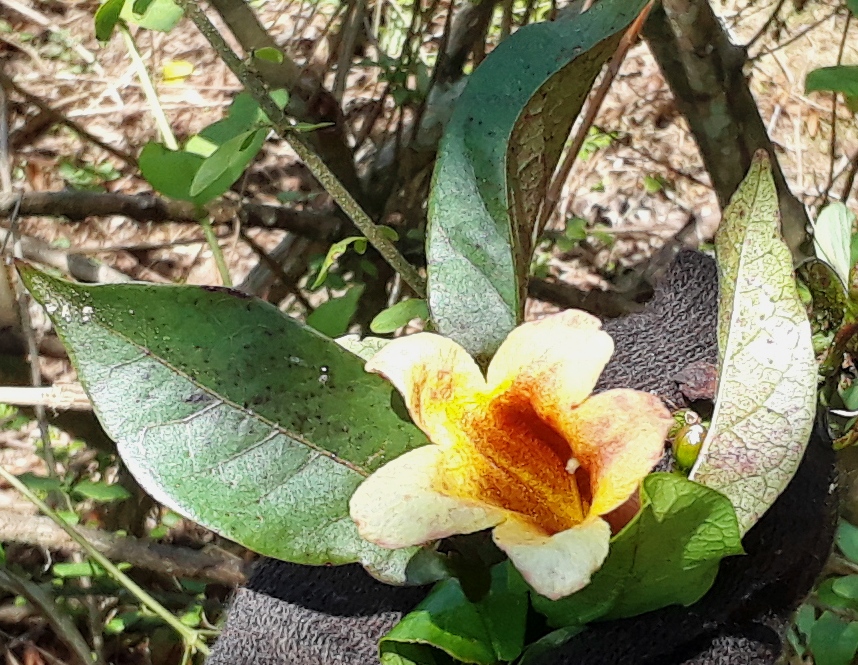 1) Take a photo of the plant you don’t recognize. (for example, I took a photo of a flower I found on a vine, as I was clearing out privet yesterday.)
1) Take a photo of the plant you don’t recognize. (for example, I took a photo of a flower I found on a vine, as I was clearing out privet yesterday.)
2) Upload it into the ap or the program.
3) Press the “identify” button.
4) Compare the results with what you’ve photographed.
In my case, I submitted 3 photos. In two cases, the crossvine flower (shown on the left) and the grapevine (shown on the left, below), the results from the search were so close that I am 99% certain of their accuracy. In the third, I’m not quite certain … but at least I am in the right family.
So why is identifying plants so vital, especially local, indigenous species? Well, for starters, you always want to have beneficial plants on your property. For example, when I first moved here, there was a shrub with wonderful purple berries on my property. In fact, it seemed to be everywhere! And because there were berries galore, I figured I’d leave the shrubs, and in fact remove other plants that seemed to get in their way. I figured I would harvest the berries later in the season and make jam and pies.
WRONG! What I was looking at was privet, a non-native species whose berries are toxic to humans, plants and birds. In fact, it’s so good at crowding out native species that Georgia calls it a “pest” plant, and encourages its eradication however and where ever possible. Who knew?
In the case of the non-identified species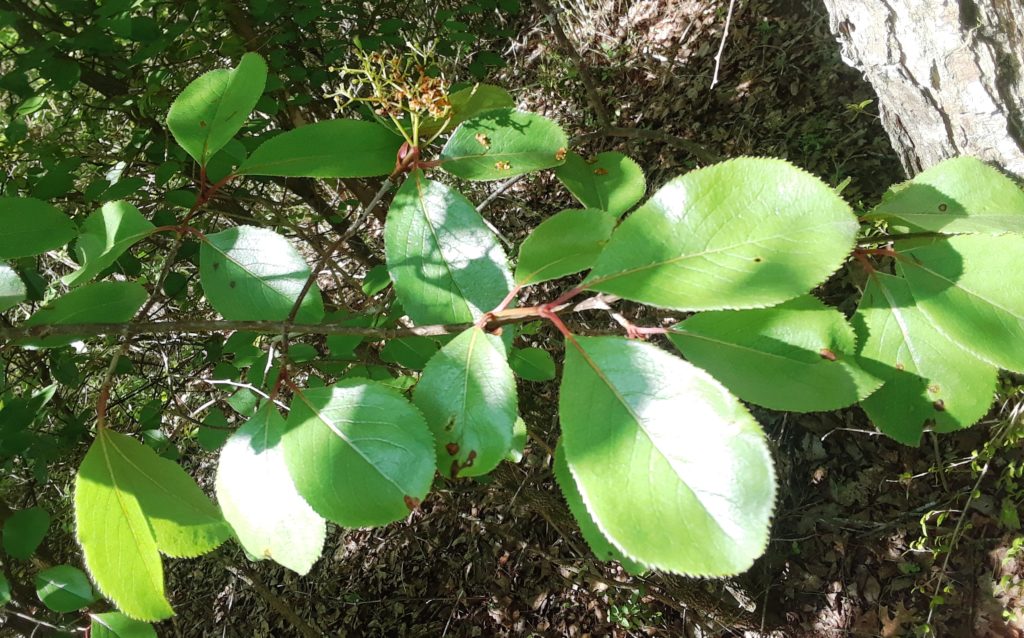 I found (photo to the right), in looking through Pl@ntNet, I think it’s a blackhaw shrub. That shrub’s berries are edible and beneficial. But I’m not 100% certain, yet. I was hoping it was an elderberry, which is extremely beneficial. Unfortunately, the elderberry looks a lot like the water hemlock which, as you can guess, is not a good plant to have around. (It’s extremely toxic.)
I found (photo to the right), in looking through Pl@ntNet, I think it’s a blackhaw shrub. That shrub’s berries are edible and beneficial. But I’m not 100% certain, yet. I was hoping it was an elderberry, which is extremely beneficial. Unfortunately, the elderberry looks a lot like the water hemlock which, as you can guess, is not a good plant to have around. (It’s extremely toxic.)
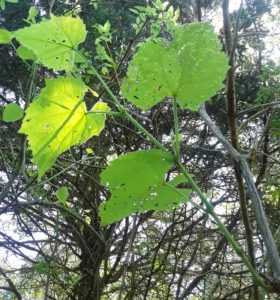 Pl@ntNet also helped me identify a vine different than any others on my property. From my experience in Wisconsin, I would have guessed it was a wild grape. That is exactly what it is, with one exception: It is a muscadine grape! These don’t grow in Wisconsin, but they are indigenous to the Carolinas, Tennessee and Georgia. I thought I might have one on my property … and now I am certain!
Pl@ntNet also helped me identify a vine different than any others on my property. From my experience in Wisconsin, I would have guessed it was a wild grape. That is exactly what it is, with one exception: It is a muscadine grape! These don’t grow in Wisconsin, but they are indigenous to the Carolinas, Tennessee and Georgia. I thought I might have one on my property … and now I am certain!
I look forward to using this ap to identify even more plants on my property. Because once you can identify plants, then you can research them and see how useful they are!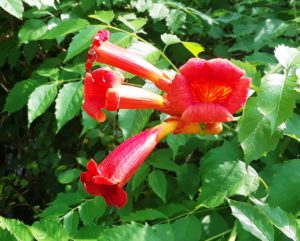
And more today: Campsis radicans or Trumpet Creeper:
and POSSIBLY: Basswood American linden Tilia americana
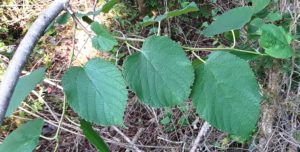
and Butterfly Milkweed or Asclepias tuberosa , commonly known as tuberous milkweed: (takes care of lung problems? https://www.fs.fed.us/wildflowers/plant-of-the-week/asclepias_tuberosa.shtml)
